Discover MCAT Basics (from MedSchoolCoach)
MCAT Basics (from MedSchoolCoach)

MCAT Basics (from MedSchoolCoach)
Author: MedSchoolCoach
Subscribed: 619Played: 15,223Subscribe
Share
© MedSchoolCoach
Description
Join us as we detail MCAT exam topics. Each podcast covers several MCAT sections with lessons based on review material put out by the AAMC, such as practice tests and question banks. Sam also interviews MCAT tutors and experts who share tips on how premed students can raise their score to get into medical school.
76 Episodes
Reverse
The essentials of identity theories and psychosocial development reveal the foundational elements of human behavior and self-perception. In this episode, Sam Smith discusses the core theories around identity, from Erikson’s stages of psychosocial development and Freud’s psychosexual stages to Piaget’s cognitive framework and Kohlberg’s stages of moral growth. Sam talks about how each theory is represented in MCAT questions, explaining key differences and how they impact our understanding of self-concept, self-esteem, and social roles. Whether it's Cooley’s looking-glass self or Vygotsky’s zone of proximal development, this episode helps make sense of the MCAT’s approach to personality and identity development. Visit medschoolcoach.com for more help with the MCAT. Jump into the conversation: (00:00) Intro (01:04) Psychosocial development and identity (01:42) The different theories of identity formation (01:57) Basic ideas regarding identity and self-concept (08:29) Erikson's psychosocial development theory (16:47) Testing strategies and MCAT questions (17:57) Freud's psychosexual development theory (24:01) Piaget's stages of cognitive development (28:15) Kohlberg's theory of moral development (32:42) Cooley's looking-glass self (33:21) George Herbert Mead's the I and the Me (34:34) Vygotsky's social development theory
Learning and memory are foundational concepts that play a critical role in acing the MCAT, especially in the Psych/Soc section. In this episode, host Sam Smith discusses the key concepts of learning and memory, covering the brain structures involved in memory formation, like the hippocampus and amygdala, as well as the different types of memory—explicit, implicit, and working memory. Sam also explores types of learning, including latent learning, observational learning, and the essential principles of classical and operant conditioning, and more. Visit medschoolcoach.com for more help with the MCAT. Jump into the conversation: (00:00) Intro (01:03) How brain structures support learning and memory (02:39) The role of memory in learning processes (03:20) How the information processing model explains memory (16:28) Types of learning: latent, observational, and conditioning (17:48) How observational learning works in social contexts (18:23) Overview of classical and operant conditioning (34:44) MCAT Advice of the Day
A foundational part of the MCAT, light and optics bridge the gap between physics and biology, making them vital for your exam preparation. In this episode, Sam Smith breaks down the fundamentals of light, covering both its wave and particle properties. From the energy of photons and the photoelectric effect, to wave behavior and the principles of refraction and reflection, Sam simplifies complex concepts to help you grasp key equations and principles. You'll also learn about lenses, ray tracing, and the real-life applications of polarization. Visit medschoolcoach.com for more help with the MCAT. Jump into the conversation: (00:00) Intro (01:03) Introduction to light and optics (03:10) How photons carry energy (05:34) The photoelectric effect and its significance (17:47) Introduction to waves and simple harmonic motion (18:46) Longitudinal vs. transverse waves explained (21:47) Constructive and destructive interference in wave behavior (23:40) Polarization, reflection, and refraction in light (36:40) How lenses and ray tracing work (44:59) MCAT Advice of the Day
Atomic chemistry is a core component of the MCAT, essential for understanding molecular behavior and periodic trends. In this episode, host Sam Smith explores key concepts in atomic chemistry, including the intricacies of quantum theory, hybridization, and molecular geometry. You'll gain insights into electron configuration, periodic trends, and the role of quantum numbers in describing electrons. Sam also discusses the significance of nuclear decay, from alpha to beta and gamma decay, and how it impacts atomic structure. Visit MedSchoolCoach.com for more help with the MCAT. Jump into the conversation: (00:00) Intro (01:48) Understanding atomic orbitals and the planetary model (04:54) Quantum theory and the wave-particle duality of electrons (06:52) Types of atomic orbitals (08:29) Electron configuration and its real-world applications (12:24) Hund’s Rule and the Pauli Exclusion Principle (17:45) The four quantum numbers (22:10) Hybridization and bond formation (26:14) Molecular geometry and its relevance (29:44) Ionic vs. covalent bonds and electronegativity (34:48) Periodic table trends: Atomic radius, electronegativity, and ionization energy (37:49) Nuclear decay: Half-life and types of decay (alpha, beta, gamma) (44:46) MCAT advice of the day
In this episode of MCAT Basics, Sam Smith discusses the reproductive system and development, breaking down essential topics for the bio and biochem section of the MCAT. Sam walks through the key reproductive organs, the processes of spermatogenesis and oogenesis, and the pathway sperm and eggs take in human reproduction. Visit medschoolcoach.com for more help with the MCAT. Jump into the conversation: (00:00) Intro (01:30) Reproductive organs: Overview of male and female reproductive anatomy (03:16) Spermatogenesis: The process of sperm cell development (04:55) Meiosis in spermatogenesis: From diploid to haploid cells (07:02) Spermatogenesis recap: The pathway from spermatagonia to spermatozoa (09:45) The menstrual cycle: Overview of the four phases (11:15) Ovulation: Triggered by luteinizing hormone surge (11:55) The luteal phase: Role of the corpus luteum in progesterone production (12:56) Menstruation: Progesterone drop and the sloughing of the uterine lining (14:16) Oogenesis: The process of egg cell development (18:17) Differences between spermatogenesis and oogenesis (19:18) Trisomy 21 (Down Syndrome) and its relation to maternal age (21:08) Fertilization: The process of sperm fusing with the egg (28:51) Gastrulation and the formation of germ layers (30:24) Germ layers: Mesoderm, ectoderm, and endoderm
In this episode, we explore key topics in genetics, including how sex-linked and autosomal traits are inherited. We'll break down inheritance patterns using real-world examples, like X-linked recessive diseases, and walk through Punnett square problems to show how these traits are passed down. We also cover the regulation of gene expression, focusing on epigenetic changes such as DNA methylation and how genetic imprinting impacts which genes are expressed. You'll gain insight into transcriptional and post-transcriptional control mechanisms in prokaryotes and eukaryotes, along with the processes of DNA repair that maintain genetic stability. Finally, we discuss important genetic lab techniques, such as PCR, blotting methods, and fluorescence in situ hybridization (FISH), and how they are used in gene analysis and diagnostics. Visit MedSchoolCoach.com for more help with the MCAT. Jump into the conversation: (00:00) Intro (01:49) Inheritance patterns (04:47) Solving X-linked inheritance problems using color blindness (06:37) Overview of autosomal dominant and recessive traits (08:08) Monohybrid and dihybrid crosses (10:40) How epigenetic changes affect gene expression (18:46) Transcriptional and translational control in prokaryotic operons (23:03) Enhancers, silencers, and chromatin remodeling (27:23) Post-transcriptional modifications (31:52) DNA repair mechanisms (40:14) Polymerase Chain Reaction (44:06) What different blotting techniques are used for (49:28) The FISH technique (52:01) MCAT Advice of the Day
Mastering the concept of sociological groups can unlock a deeper understanding of how we interact and influence each other. On top of that, social interactions and group dynamics form the backbone of the Psych/Soc section of the MCAT, so mastering this topic is key to a good score. In this episode, host Sam Smith breaks down the essential topic of sociological groups. You’ll gain a comprehensive understanding of the different types of groups, the dynamics within organizations, bureaucracy, and social networks, and key concepts like groupthink, group polarization, and social loafing. We also explore how these concepts apply to real-world examples, from business partnerships to historical events like the Salem witch trials. Visit medschoolcoach.com for more help with the MCAT. Jump into the conversation: 00:00 Intro 02:09 Types of social groups and social networks 08:06 Organizations and bureaucracy 10:17 Normative organizations 16:16 Group interactions and dynamics 20:08 Difference between group think and group polarization 27:57 Deindividuation, aka the ‘mob mentality’ 31:57 Cultural groups and assimilation 34:22 MCAT Advice of the Day
In this episode, Sam Smith will discuss and help you understand the essential organic chemistry mechanisms and reactions you may encounter when taking the MCAT. From nucleophilic substitution reactions like SN1 and SN2 to aldol condensation and oxidation and reduction of alcohols, Sam will cover the high-yield topics that are crucial for your test prep. He will also touch on key IR and NMR values that could appear on your exam. Visit medschoolcoach.com for more help with the MCAT. Jump into the conversation: (00:00) Intro (01:42) SN1 and SN2 nucleophilic substitution reactions, mechanisms, and key concepts (03:18) Carbonyl substitution and addition reactions (06:12) Introduction to aldol condensation reactions (07:17) Overview of oxidation and reduction reactions (10:09) Explanation of Fischer esterification and saponification (12:51) Summary of elimination reactions (E1 and E2) and their distinguishing features. (13:38) What numbers to know for IR and NMR
Understanding study design and research variables is crucial for mastering the MCAT and in medical research. In this episode, host Sam Smith discusses the essentials of study design and research methods, from understanding independent and dependent variables to navigating the complexities of correlation, causation, and confounding variables. You’ll learn about the different types of studies, including experimental, observational, case-control, and cohort designs, and how they apply to MCAT questions. Plus, we’ll explore odds ratios, study validity, and the importance of specificity and sensitivity in diagnostic tests. This episode also covers common study limitations and biases, helping you sharpen your critical thinking skills for exam day. Visit MedSchoolCoach.com for more help with the MCAT. Jump into the conversation: (00:00) Intro (01:22) Types of variables seen in studies (03:10) Correlation and Pearson correlation coefficient (05:38) Causation vs. correlation (07:16) Confounding variables: Examples and impact (08:55) Odds ratio and study applications (11:00) Validities in experiments (16:20) Specificity vs. sensitivity in diagnostic tests (19:13) Types of studies: Experimental and observational (31:32) Single blind vs. double blind studies (32:58) Randomized controlled trials (RCTs) (35:57) Research limitations and study bias (45:39) MCAT Advice of the Day
In this episode, we're diving deep into the nuanced aspects of metabolism that are essential yet less prominently featured on the MCAT. We'll cover gluconeogenesis, the pentose phosphate pathway, and ketone body generation—topics that, while subtle, play a crucial role in your comprehensive understanding of biochemistry. We'll explore how your body manages glucose levels, the functions of NADPH, how glycogen is synthesized and broken down, and the metabolic adaptations during periods of low glucose. Visit MedSchoolCoach.com for more help with the MCAT. Jump into the conversation: (00:00) Intro (01:54) Pentose phosphate pathway overview (02:42) Functions of NADPH in the body (03:35) Difference between NADPH and NADH (04:34) Key points to know about the pentose phosphate pathway (07:01) Insulin and glucagon: hormonal regulation of blood glucose (09:00) Effects of insulin & glucagon on the body (10:48) Glycogen synthesis & breakdown (15:51) Glycogen debranching enzyme and breakdown of branched chains (18:49) Bypassing irreversible steps in glycolysis during gluconeogenesis (21:19) Regulation of gluconeogenesis (22:25) Ketogenic amino acids and their role in ketone body formation (24:04) MCAT advice of the day: reading journal articles
In this episode, we’ll learn the intricate world of biomolecule structure, naming, and function. We'll explore the structural nuances between glucose and fructose and unravel the complexities of glycosidic linkages in sucrose. We'll also examine the vital roles of fatty acids, the composition of triglycerides and phospholipids, and their impact on cell membrane architecture and fluidity. Plus, we discuss cholesterol's bidirectional regulation of membrane stability and the contrasting roles of LDL and HDL in cardiovascular health. We’ll dive into the essential structures and functions of steroids and nucleotides, as well as the fundamentals of DNA and RNA structure and the importance of ATP. We'll also look at the unique properties of sphingolipids, glycerophospholipids, and signaling molecules like eicosanoids. So, tune in as we break down these critical biomolecules that form the foundation of life and are essential knowledge for the MCAT exam. Visit MedSchoolCoach.com for more help with the MCAT. Jump into the conversation: (00:00) Intro (01:03) Overview of Biomolecule Structure and Importance (02:37) Steroid Structure and Function (06:36) Nucleotide Structure and Function (12:02) DNA Structure and Bonding (16:30) Carbohydrate Structure (19:53) Disaccharides and Polysaccharides (24:47) Fatty Acids and Phospholipids (28:57) Cholesterol and Its Role in Membrane Fluidity (31:27) Sphingolipids and Their Functions (33:02) Eicosanoids: Signaling Molecules (38:12) Heme Groups and Their Functions (41:12) Molecule Entry into Cells (44:12) MCAT Advice of the Day
In this episode, we explore enzyme kinetics and inhibition, key concepts for the MCAT Bio/Biochem section. We’ll cover how enzymes accelerate biological reactions by lowering activation energy and introduce two models for enzyme-substrate interaction: the lock-and-key model and the induced fit model. You'll learn how to apply the Michaelis-Menten equation, focusing on factors like Km and Vmax to understand enzyme efficiency and substrate binding. We’ll also break down the different types of enzyme inhibition—competitive, non-competitive, and uncompetitive—and their effects on enzyme activity. Finally, we discuss the six major types of enzymes and their roles in biological processes, with examples like ligases, isomerases, and hydrolases. Visit MedSchoolCoach.com for more help with the MCAT. Jump into the conversation: (00:00) Introduction to enzyme kinetics and inhibition (01:58) Definition of enzymes and their role (03:50) Enzyme models: lock and key vs. induced fit (06:28) Michaelis-Menten Equation (10:53) Association and dissociation constants (12:34) Kcat and catalytic efficiency (14:43) Assumptions of Michaelis-Menten (18:23) Lineweaver-Burk Plot: linearized Michaelis-Menten Equation (21:09) Enzyme inhibition: reversible vs. irreversible (22:14) Competitive inhibition: Km and Vmax (24:46) Non-competitive inhibition: Effects on Km and Vmax (27:20) Irreversible inhibition (29:13) Allosteric inhibition (31:26) Homotropic and feedback inhibition (37:40) Common biological enzymes: dehydrogenase, synthetase, and kinase (43:44) MCAT Advice of the Day
In this episode, we cover the foundational concepts of genetics, focusing on chromosomes, mitosis, meiosis, and inheritance patterns—important topics for the MCAT Bio/Biochem section. We’ll discuss how Gregor Mendel’s laws of segregation, independent assortment, and dominance influence inheritance and how Charles Darwin’s theory of natural selection relates to modern genetics. The episode includes an overview of chromosome structure, the differences between X and Y chromosomes, and the effects of chromosomal mutations like deletions, duplications, and translocations. Mitosis and meiosis are also explained, with an emphasis on their roles in cell division and genetic diversity. Additionally, we explore genetic concepts such as codominance, incomplete dominance, genetic leakage, and how factors like penetrance and expressivity influence gene expression. Visit MedSchoolCoach.com for more help with the MCAT. Jump into the conversation: (00:00) Introduction to Genetics and Chromosomes (01:41) Background on genetics: Key figures and their contributions (Mendel, Darwin) (03:37) Mendel’s Laws: Segregation, independent assortment, and dominance (05:50) Charles Darwin: Evolution and natural selection in genetics (09:43) Chromosomes and DNA: Discovery and role in inheritance (11:29) Chromosome Numbers and Structure: Ploidy, chromatids, and human chromosomes (14:06) X and Y Chromosomes: Sex determination and sex-linked traits (18:34) Chromosomal Mutations: Duplication, deletion, inversion, translocation (22:00) Mitosis: Stages and the production of identical daughter cells (28:16) Meiosis: Gamete formation and genetic diversity (32:40) Centrosome, Centromere, and Centriole: Roles in cell division (33:50) Genes and Phenotypes: Alleles, genotypes, and their effect on traits (38:28) Dominant and Recessive Alleles: How traits are determined (40:37) Genetic Leakage, Penetrance, and Expressivity: Gene flow, expression likelihood, and variability (42:47) MCAT Advice of the Day
In this episode, Sam Smith covers the intricacies of metabolism, focusing on glycolysis, the Krebs cycle, and the electron transport chain. First, the podcast explores the process of glycolysis, breaking down the key enzymes, intermediates, and regulation points. Next is the citric acid cycle, examining its regulation, energy production, and the roles of specific enzymes and intermediates. Lastly, we look at the electron transport chain and discuss how electrons are transferred through the five complexes, creating a proton gradient that drives ATP synthase to produce ATP. Visit MedSchoolCoach.com for more help with the MCAT. Jump into the conversation: (00:00) Intro (03:15) Ten steps of glycolysis: Intermediate names and enzymes (08:01) Simplified glycolysis process: Breaking down key steps (12:30) Glycolysis regulation: Allosteric regulation of enzymes (21:13) Mnemonics for Krebs cycle intermediates (25:52) Regulation of the Krebs cycle: ATP, calcium, and more (30:26) Electron transport chain: Overview and key steps (34:35) ATP synthase (33:00) Reduction potentials in the electron transport chain (37:31) Synopsis of metabolism (40:34) MCAT Advice of the Day
Acids and bases are foundational topics in chemistry, crucial for understanding various biological and chemical systems you'll encounter in the MCAT. In this episode, host Sam Smith discusses the selection and use of indicators in titrations to the pH at the equivalence point and the importance of buffers in maintaining physiological pH levels. You'll learn about the Henderson-Hasselbalch equation, the blood buffer system, and how to tackle common problems involving acids and bases. Plus, we'll break down strong and weak acids and the significance of their dissociation constants. This episode also shares tips on calculating pH, using ICE tables for weak acid problems, and converting between pH, pOH, and ion concentrations. Visit MedSchoolCoach.com for more help with the MCAT. Jump into the conversation: (00:00) Intro (02:16) Basic definitions of acids and bases (11:33) Calculating pH (24:55) Titrations (35:26) Buffers (41:16) Blood buffer system (45:25) MCAT advice of the day
A foundational topic for the MCAT is the nervous system, appearing in several exam sections and impacting everything from neurotransmission to brain structure. In this episode, Sam Smith walks us through the nervous system, covering its major components and functions. From the organization of the central and peripheral nervous systems to neurotransmitters and brain structures, Sam provides clear explanations to help you understand key topics like the autonomic nervous system's fight-or-flight response, brain imaging techniques, and more. Visit medschoolcoach.com for more help with the MCAT. Jump into the conversation: (00:00) Intro (01:03) How the central and peripheral nervous systems are organized (02:33) Autonomic and somatic systems (03:22) Sympathetic and parasympathetic branches (04:12) How the brain is structured: forebrain, midbrain, and hindbrain (11:44) How brain imaging techniques (CT, MRI, EEG, fMRI, PET) are used (14:06) How neurons are structured and how they transmit signals (16:00) How action potentials work and how ion channels play a role (20:30) How myelin sheaths speed up signals (25:00) How language processing happens in Broca's and Wernicke's areas (28:00) Neurological disorders (43:45) The structures of the limbic system (47:25) The structures of the brain related to addiction
Amino acids are the building blocks of life and an essential topic for the MCAT. In this episode, host Sam Smith takes us through the key concepts of amino acids, including their structures, naming conventions, and roles in protein formation. We’ll cover the differences between hydrophobic and hydrophilic amino acids, how to memorize single-letter abbreviations, and the importance of charged amino acids in physiological conditions. Additionally, Sam touches on mutations and how they can affect protein folding and enzyme function. Visit medschoolcoach.com for more help with the MCAT. Jump into the conversation: (00:00) Intro (01:47) Amino acids naming conventions and abbreviations (04:49) Hydrophobic vs. hydrophilic amino acids (05:39) Charged and uncharged amino acids (10:14) Explanation of mutation notation (11:53) Mutations affecting the substrate pocket of enzymes (13:15) Mutations impacting enzyme functionality (15:58) Role of amino acids in protein tertiary structure (17:15) Salt bridges and protein stability (20:47) Quiz
One of the body's key survival mechanisms is gluconeogenesis, a vital metabolic process, and the body's clever way of making glucose when supplies are low. On this episode of the MCAT Basics podcast, guest host Alex Starks walks through the process of gluconeogenesis. He explains how the body generates glucose when levels drop. Highlighting the liver's role, Alex explains how amino acids, lactate, and glycerol are converted into glucose. The episode also touches on the energy demands of the process and why muscle cells aren't involved in gluconeogenesis. Visit medschoolcoach.com for more help with the MCAT. Jump into the conversation: (00:00) Intro (02:15) Overview of glucose metabolism and glycogen storage (03:37) The liver’s role in maintaining blood glucose levels (05:11) Glucogenic amino acids and their role in glucose production (06:06) Conversion of alanine and glutamine to pyruvate (06:53) Lactate and the Cori cycle (07:34) Glycerol from triglycerides entering gluconeogenesis (08:27) The first bypass reaction: Pyruvate to oxaloacetate (09:55) The role of mitochondria and the malate-aspartate shuttle (11:00) Phosphoenolpyruvate formation and energy requirements (12:16) Steps of gluconeogenesis and ATP consumption (13:38) The second bypass reaction: Fructose 1,6-bisphosphate to fructose 6-phosphate (14:16) The third bypass reaction: Glucose 6-phosphate to glucose (15:31) Gluconeogenesis regulation and the role of glucagon (17:10) Quiz
The electron transport chain is a fundamental pathway in biochemistry, critical for understanding the energy production that powers cellular function. In this episode, guest host Alex Starks breaks down the intricate process of the electron transport chain (ETC). Building on previous discussions of glucose metabolism, Alex walks through the components that play key roles in the movement of electrons through complexes within the inner mitochondrial membrane. We also cover the functions of coenzyme Q and cytochrome c, as well as oxygen’s critical role in completing the process. Visit medschoolcoach.com for more help with the MCAT. Jump into the conversation: (00:00) Intro (02:11) Recap of glycolysis, pyruvate, and the Krebs cycle (03:02) Location of the TCA cycle and ETC in the mitochondria (04:22) Overview of NADH and FADH2 production (05:38) Complex I: NADH dehydrogenase and coenzyme Q (08:00) Complex II: Succinate dehydrogenase and FADH2 (11:15) Complex III: Cytochrome c reductase and the role of proton pumping (14:32) Complex IV: Cytochrome c oxidase and oxygen (18:14) The role of ATP synthase (21:47) Total ATP yield from aerobic respiration (26:00) How the electron chain is disrupted (30:20) Uncouplers and their metabolic effects (35:16) Quiz
This MCAT Basics episode covers fluid statics (fluids standing still). It begins with different fluid properties, including surface tension, vapor pressure, adsorption and absorption, adhesion and cohesion, and Henry's law. Next, it discusses several important fluid statics concepts: static fluid pressure, Pascal's law, gauge pressure vs absolute pressure, osmotic pressure, and buoyancy. For information on fluid dynamics (moving fluids), skip to the 43:00 mark in the cardiovascular system + fluids podcast. Visit MedSchoolCoach.com for more help with the MCAT. [00:00] Introduction [02:18] Properties of fluids [07:10] Surface Tension [11:54] Difference between adsorption and absorption [14:09] Vapor Pressure [19:07] Henry’s Law [20:35] Static Fluid Pressure [25:10] Pascal’s Law [29:23] The difference between gauge pressure and absolute pressure. [31:24] Osmotic Pressure [44:35] Buoyancy



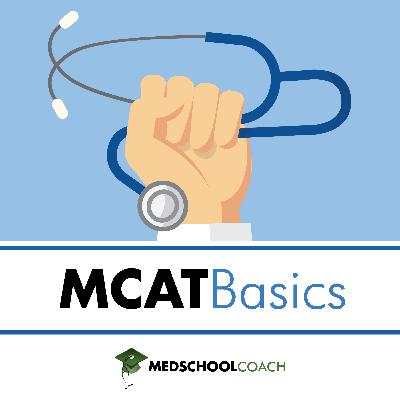
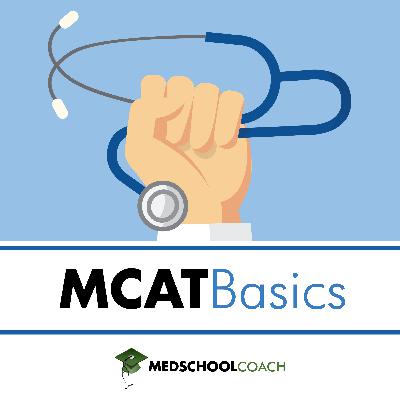


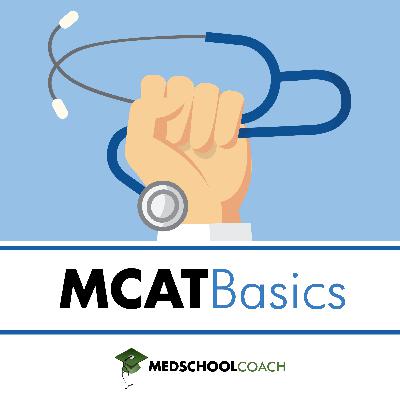

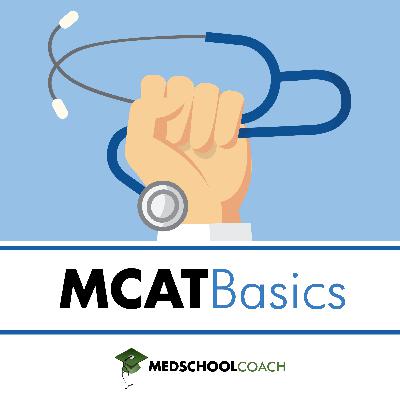
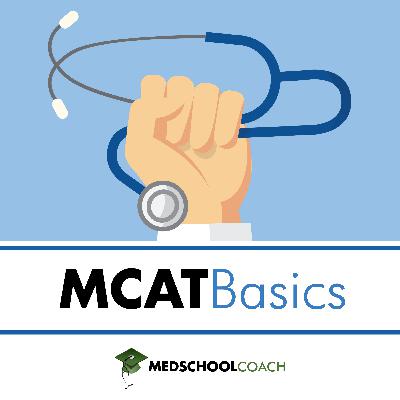
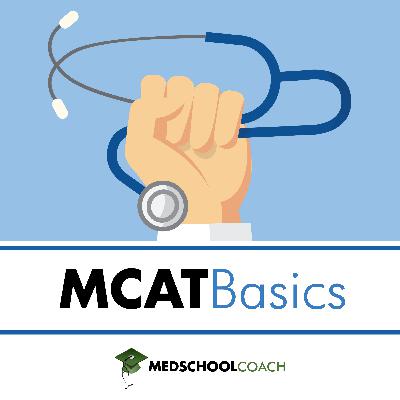
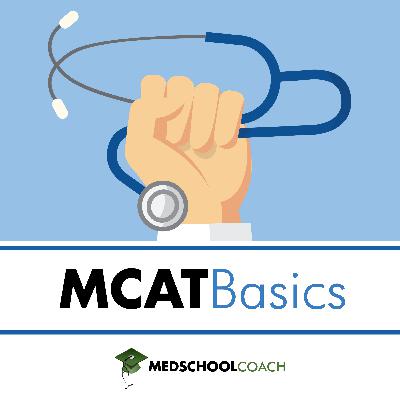

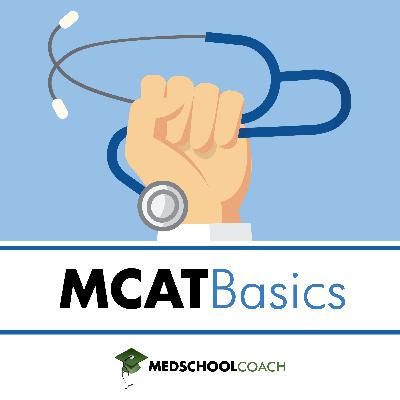
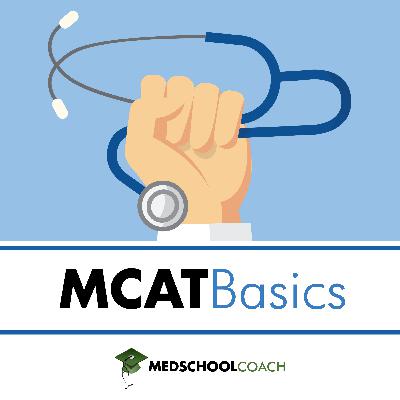
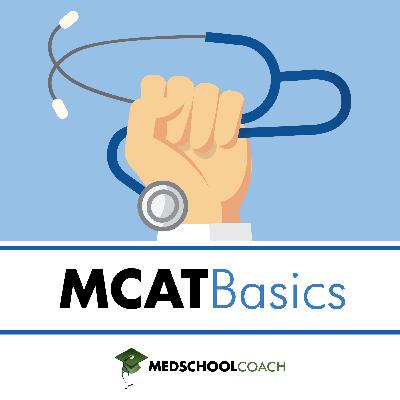
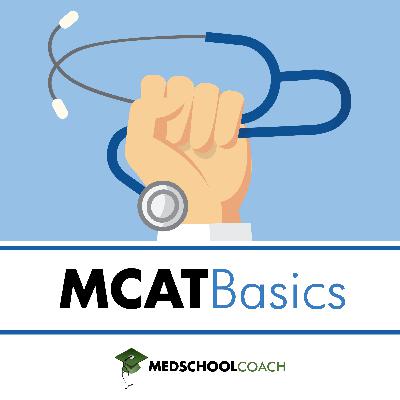
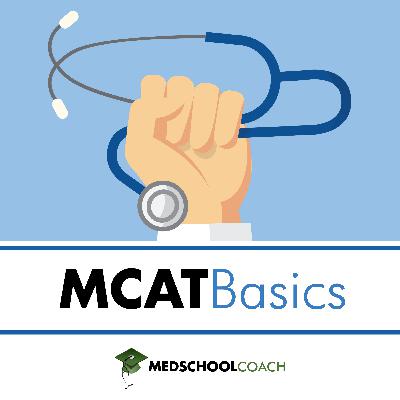
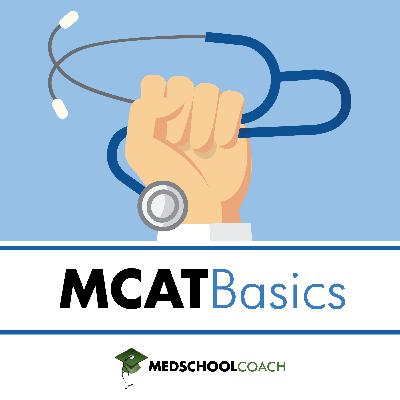
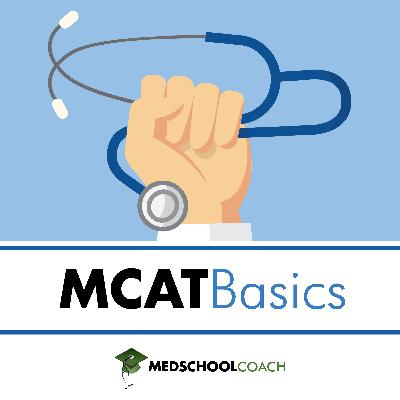
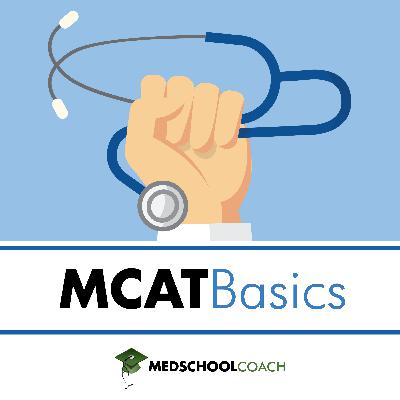



This was a very good episode. Good breakdown and explanation. Give the course name, e.g. biochem I. It was hard to relate the quiz questions to the lecture topic, but I still liked the segment because you explained the answer well. A lot of content for the time. U listened twice. Thanks for respecting our time.